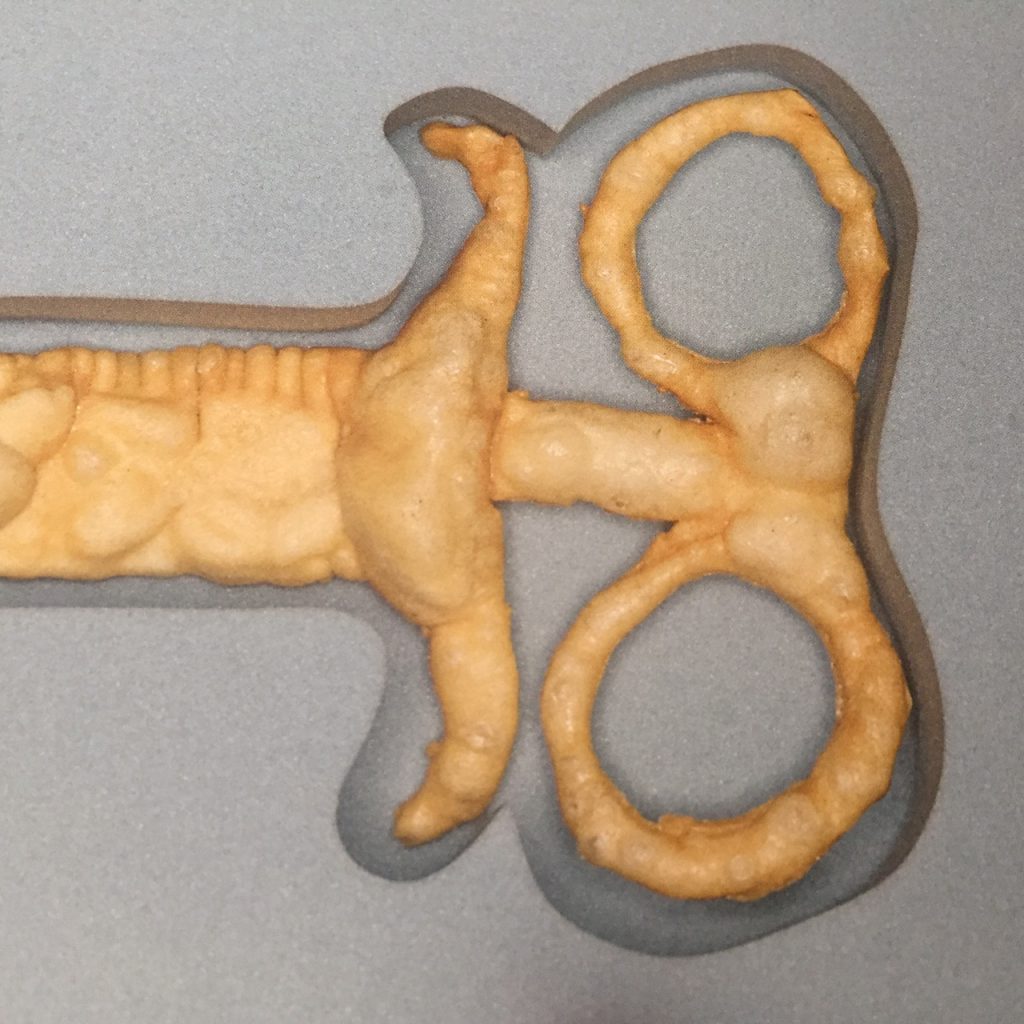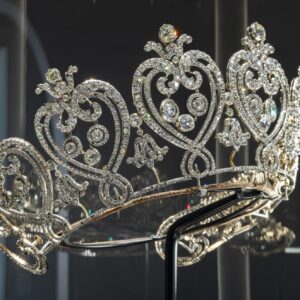One third of Italy’s team for the 57th Venice Biennale, Roberto Cuoghi (b. 1973) might be best known for masochistic performative feats like transforming himself at age 25 into a 67 year old, wearing glasses fitted with Schmidt-Pechan prisms that flipped his vision upside down, and letting his finger nails grow for 11 months so he couldn’t write the diary documenting it.
“PERLA POLLINA” (named from a ‘meaningless’ autocorrection) is a “mid-career retrospective” with seventy of Cuoghi’s works over two decades (accompanied by a sprawling 500-page catalogue). Cuoghi embraces the rejection of a single method preferring “doing without knowing how”. The show includes longeurs of documentation — diaries and sketches as the remnants of past conceptual and experiential acts — and a thrillingly present smorgasbord of idiosyncratic artefacts of ugly beauty.
Surgical instruments deep fried in batter look like bubbled and bloated Cthonian fish out of nightmares, or the remnants of a Chinese meal prepared by David Cronenberg. They accompany a course of Ritratti (Portraits) of colleagues that Cuoghi has mutilated and wounded (the portraits, not the colleagues — we hope). The Putiferio series of putrefied monster fish in vitrines, and sculptural casts of prehistoric crabs, are alien and abominable. Crabs invoke the Latin: cancer, our own cells invading our own cells.
In his text Il Tumore Liberato (”Tumour Set Free”) Cuoghi speculates on the evolutionary value of cancer, of errors and accidents. A brutal theodicy, it’s as much a description of his own punishing exploratory artistic evolution, a celebration of the mutilated, deformed forms that accompany experimentation and innovation, an expression of antagonism toward the sterility of our culture’s obsession with the beautiful and flawless.
“PERLA POLLINA (1996-2016)” at the Madre Museum, Naples, Italy until September 2017; Kölnischer Kunstverein, Cologne, Germany from October 2017 (curated by and previously exhibited at Centre d’Art Contemporain, Geneva, Switzerland)










